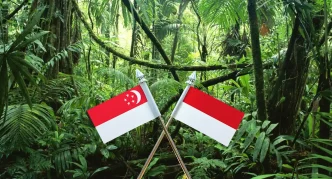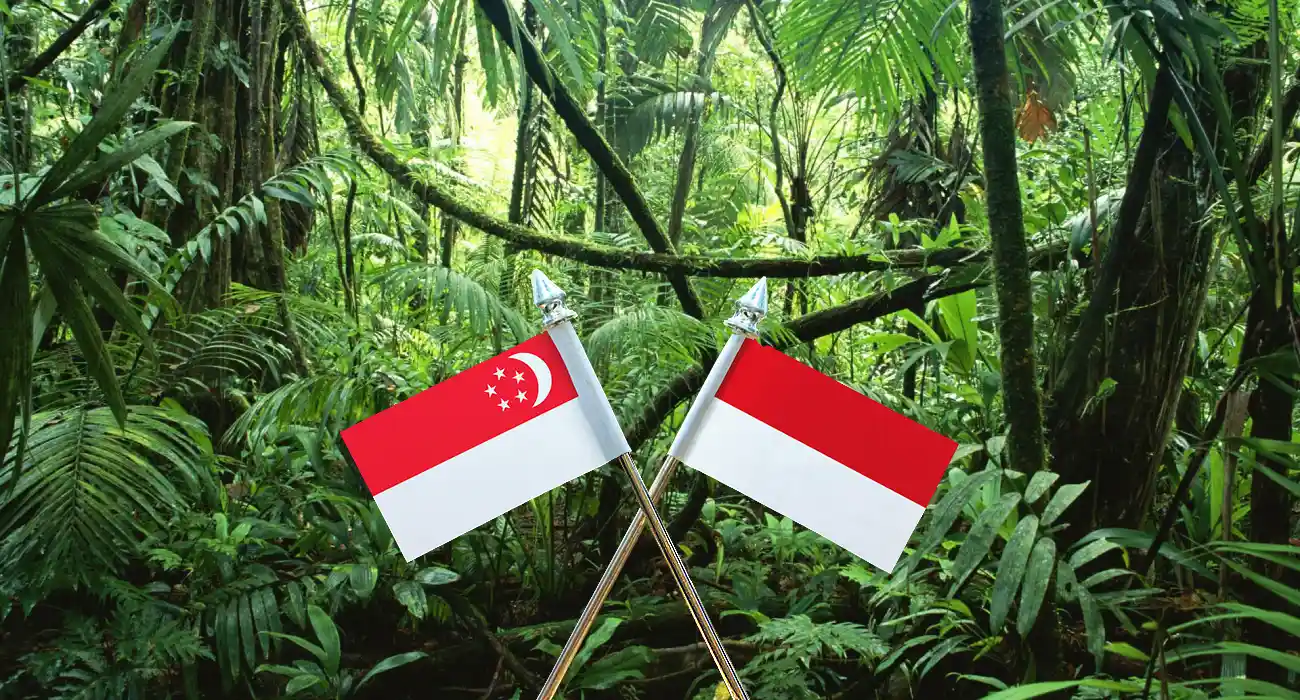A new era of cooperation between Singapore and Indonesia has emerged from the recent Leaders’ Retreat, with both nations placing climate action and the green economy at the forefront of their bilateral agenda. Singapore Prime Minister Lawrence Wong and Indonesian President Prabowo Subianto unveiled a series of ambitious initiatives aimed at sustainable industrial development, cross-border electricity trade, and carbon capture and storage (CCS). These agreements signal a shared commitment to tackling climate change, though experts caution that equitable implementation will be key to long-term success.
Blueprint for a Green Future
The agreements, hailed as a milestone by both leaders, focus on three core areas of collaboration. The first involves the creation of sustainable industrial zones, likely to be established in Indonesia’s Batam, Bintan, or Karimun islands near Singapore. These zones are envisioned as hubs for green manufacturing, powered by renewable energy and governed by international environmental standards. The initiative aims to combine Singapore’s technological expertise with Indonesia’s strategic location and resources, fostering industries that prioritize sustainability.
The second agreement formalizes cross-border electricity trade, a critical step for Singapore, which aims to import up to six gigawatts of low-carbon electricity—roughly 30 percent of its power needs—by 2035. This energy, expected to be sourced from solar and wind farms in Indonesia’s Sumatra or Kalimantan regions, will be transmitted via undersea cables. For Singapore, this deal offers a pathway to reduce domestic emissions, while for Indonesia, it presents an opportunity to monetize its renewable energy potential and bolster foreign exchange earnings.
The third pillar of the partnership centers on carbon capture and storage, a technology that could position Indonesia as a regional hub for managing emissions. Under this arrangement, emissions from Singapore’s refineries and industrial facilities would be transported and stored in depleted oil and gas fields in Indonesia. While this initiative holds promise for reducing carbon footprints, it has sparked concerns among environmentalists about its potential to delay a full transition away from fossil fuels.
Complementary Strengths, Complex Challenges
Analysts view the partnership as a natural alignment of each nation’s strengths. Singapore, constrained by limited land and natural resources, brings significant capital, technological innovation, and expertise in green finance to the table. Indonesia, on the other hand, possesses vast ecological assets—ranging from rainforests and mineral deposits to immense solar and hydropower potential—that are vital to the global energy transition. Together, these complementary capabilities could drive meaningful progress in sustainable development across Southeast Asia.
However, the road to success is fraught with challenges. Observers emphasize that the collaboration must transcend transactional arrangements, where Singapore provides funding and Indonesia merely supplies land or storage capacity. Past foreign-backed resource projects in Indonesia have often failed to deliver lasting benefits to local communities, with some carbon offset schemes criticized for displacing residents or locking up land without creating jobs or infrastructure. There are, however, positive examples, with certain projects contributing to education, healthcare access, and forest restoration alongside employment opportunities.
Surta Wijaya, chairman of the All-Indonesia Village Administration Association, underscored the need for local involvement in these initiatives. “The cooperation between Singapore and Indonesia is good for both countries, as long as it does not disadvantage either party. What Indonesia needs to do is ensure it does not merely become a provider of land and resources without receiving proportional benefits” he told a regional news outlet. His comments reflect a broader concern that the benefits of such partnerships must be equitably shared, particularly at the community level.
Balancing Innovation and Accountability
For Indonesia, the stakes are high. The country must leverage its ecological wealth without compromising sovereignty, livelihoods, or environmental integrity. Associate Professor Fahmy Radhi, an energy economist at Gadjah Mada University, advocated for the entire green energy value chain—from production to processing—to be based in Indonesia. This approach, he argued, would prevent the replication of past models where foreign investors imported their own equipment and labor, limiting local economic gains.
Tata Mustasya, executive director of the Indonesian Foundation for Sustainable Welfare (Sustain), raised concerns about the CCS initiative, warning that it could become a form of greenwashing if applied primarily to oil and gas facilities. “It might discourage the shift from fossil fuels to renewable energy” he cautioned. He called for stringent environmental, social, and labor standards to safeguard communities and ecosystems, especially as demand for minerals critical to the green transition—such as nickel—surges. Current mining practices in eastern Indonesia and quartz sand extraction on Rempang Island near Batam have already caused significant environmental damage and social unrest, including labor disputes.
Singapore, too, faces scrutiny as it positions itself as a hub for green finance and climate innovation. Analysts warn against perceptions that the city-state is outsourcing its emissions or relying on questionable offsetting practices. Melissa Low, a research fellow at the National University of Singapore’s Centre for Nature-based Climate Solutions, highlighted the importance of international cooperation under the Paris Agreement, noting that cross-border deals enable countries like Singapore to pursue mitigation options unavailable domestically. However, she cautioned against over-reliance on energy imports or offsets, suggesting a cap on imported electricity rather than a fixed target of six gigawatts by 2035. “It would be helpful to understand what percentage of energy imports ensures safe, reliable, and affordable electricity, and whether imports from countries like Indonesia, Cambodia, and Vietnam will impact our ability to be energy self-sufficient” she said.
Defining a Win-Win Partnership
What would a truly equitable partnership look like? For Singapore, it means demonstrating that green finance can also be fair finance. Beyond capital investment, the city-state could facilitate technology transfers and build facilities in Indonesia to create local jobs and skills. For Indonesia, success hinges on using its natural resources in a way that preserves environmental integrity and prioritizes community welfare. Robust governance, independent certification, and land safeguards are essential to achieving this balance.
Professor Radhi emphasized the importance of transparency and good governance in project management to prevent issues such as corruption. “There must be principles of good governance to prevent issues such as corruption. I believe Singapore already has strong corporate governance. The question is how to apply those practices in Indonesian companies. If this is done, neither country will be disadvantaged” he noted. High-level political support, particularly from President Prabowo, will also be critical to ensuring policy continuity and effective implementation.
From Vision to Action
The political will for this green partnership appears strong, with both Prime Minister Wong and President Prabowo publicly reaffirming their commitment to climate action and economic transformation. Their shared vision positions Singapore and Indonesia as potential leaders in green diplomacy within ASEAN, setting a precedent for regional cooperation on sustainability.
Yet, the true test lies ahead in translating these commitments into tangible, inclusive outcomes. Questions remain about how these initiatives will balance economic growth with environmental protection, and whether they can deliver equitable benefits to communities on both sides of the partnership. As the agreements move from blueprint to implementation, their impact on the region’s green transition will be closely watched, with the potential to redefine bilateral ties in an era of urgent climate challenges.
















